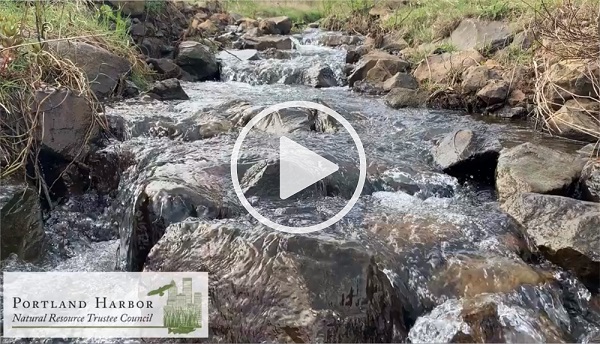A new storymap created by NOAA and the Portland Harbor Natural Resource Trustee Council depicts a visual journey of restoration efforts in Portland Harbor in Oregon. The storymap highlights four restoration projects that provide broad, long-term ecosystem benefits concentrated within and around the area where the injuries to natural resources have taken place.

Portland Harbor Ecological Restoration Project Locations
Ecological Restoration Projects
The Trustee Council’s ecological restoration efforts will improve habitat conditions along the lower Willamette River, its shorelines, floodplain, and aquatic habitats. Ecological restoration is focused on habitats that provide benefits to a suite of species injured by contamination in Portland Harbor, with particular focus on juvenile Chinook salmon as well as lamprey, bald eagle, and mink.
Several ecological restoration projects have already been implemented to benefit fish and wildlife affected by contamination released into the Portland Harbor Superfund site. These projects were built by independent project developers and are called restoration banks. The project developers built large projects with the intent to sell natural resource "credits" to potentially responsible parties who are participating in the cooperative phase of the Trustee Council’s damage assessment. These credits will help those parties meet their obligations for environmental damages resulting from contamination in Portland Harbor. The Trustee Council may also purchase credits from these projects using funds received from early settlements with potentially responsible parties.
The Trustee Council provides technical assistance and oversight to the restoration banks to ensure that each project meets the goals and objectives outlined in the Trustee Council's programmatic and supplemental restoration plans.
To date, four restoration banks have been built:
Care has been taken in the development of each of these four ecological restoration projects to benefit tribal and recreation resources when possible. For example, native plants of cultural significance were incorporated into the planting plan for each site, lamprey monitoring will be conducted at each site for 20 years, and public walking paths are provided at some sites. Over time, if fish populations increase with help from these projects, subsistence and recreational fishing in the area will be improved. In the future, additional ecological projects may be planned and implemented.
The Trustee Council is excited to share a virtual tour showcasing the four restoration banks, including wildlife seen at the sites.




